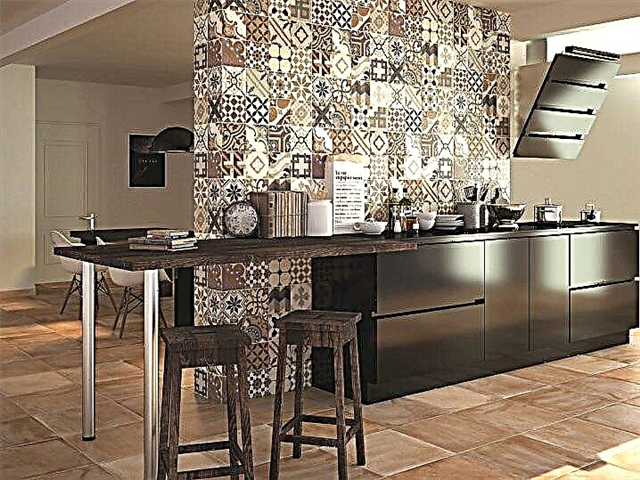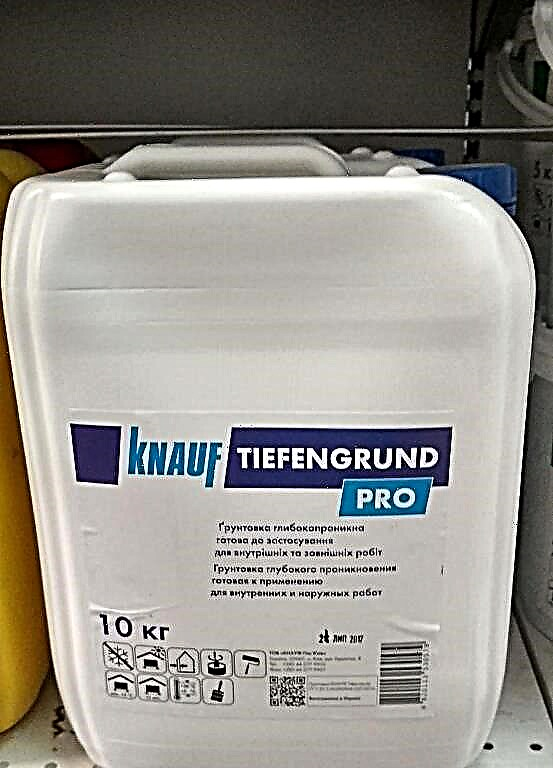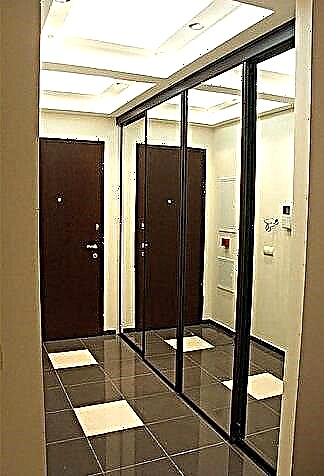
The arrangement of any kitchen provides for the laying of tiles. Today we will learn how to choose the right material for a kitchen apron, where to buy it, and also talk in more detail about Italian manufacturers.

There are many coatings for a kitchen apron, but mainly the following types are distinguished:


Tile - in most cases, it is an economy class. Its quality is lower than that of ceramics, but its low price contributes to greater demand among consumers. The surface is most often covered with a decorative pattern, which can have absolutely any shape.


With a glossy surface - a quality standard. Its surface is almost mirrored, as it is covered with gloss. Such a surface perfectly reflects light, which will significantly affect the visualization of the room - it will appear lighter and larger.

White tile - a material from plain white ceramics. Most applicable to a bright kitchen - it will be in perfect harmony with the bright colors of the room.

When choosing a material, you should pay attention to the quality of the surface - there should be a special surface that will not deteriorate from cleaning products. Therefore, be sure to pay attention to the letter “A” in the name, such a letter will guarantee high surface quality.

Varieties of Italian Cooking Tiles
Tiles for Italian-made kitchens have an original design. Her material stands out strikingly from the background of tiles of other companies. This is due to the fact that the masters are constantly creating new trends in the decoration of premises.
Tile manufacturers keep on their staff artists working on luxury collections. The work of Italian tile designers is appreciated in many countries of the world, therefore, other manufacturers, including Russian ones, turn to them for help in creating tile patterns.
Collections of Italian tiles for the kitchen are clearly divided into types depending on the destination. There are materials for finishing floors and walls, kitchen, bathroom, living room and hallway. Each specialized collection is made taking into account operating conditions.
For example, for rooms with a high degree of patency and load, a more durable tile coating is selected.
Italian kitchen tiles, depending on the appearance, are as follows:
- Tiled. Often, such material is referred to the economy class, since it is characterized by a lower strength indicator, which determines the affordable cost. The surface is covered with decorative drawings of various subjects.
- Glossy. This is a quality material with a glossy mirror surface that reflects light, so that the room visually looks more spacious.
- White. Ceramic material is painted in a single range. It is used for finishing kitchens with a light or dark set.
- Cotto. Ceramic tiles with a matte finish for wall, floor and kitchen apron. This is a high-strength material made of high-quality clay, which allows finishing the premises with the calculation of long-term operation. On sale there are exclusive handmade collections for true connoisseurs of the Italian style of the southern coast.
- Majolica - tiles coated with opaque glaze and painting are processed using double firing technology, which provides strength, wear resistance and durability.
- Terraglia. This is a material resembling natural stone. It is made from natural raw materials - flux, clay and sand. Kitchen aprons tiled with such tiles look very beautiful. The surface is decorated with patterns, drawings and ornaments.
- Gres. Unglazed ceramic material that is made from mica, kaolin clay and quartz. A special molding process provides strength comparable to granite. The material is not erased, does not lose color, no scratches are visible on it. Gres is suitable not only for wall aprons, but also for facing countertops.
- Clinker. This is one of the most durable tiles for finishing a kitchen. The material is made from baked clay water by exposure to maximum temperatures.
Reference. When choosing tile for an apron, pay attention to the letter designations. Marking "A" indicates that the surface is resistant to abrasion, it can be treated with cleaning agents.
 Types of stoves depending on size:
Types of stoves depending on size:
- 10x10 - The classic format that is most popular with consumers, due to the versatility and simplicity of masonry. Suitable for wall cladding in small kitchens, does not require trimming.
- Wild boar - the tiles are rectangular in shape, with dimensions of 15x7.5 and 20x10 cm. The material received its original name due to the chamfered edges and the external similarity with brick. The hue range is presented in pastel shades, the most popular color is white.
- Mosaic - the form is designed to create an individual style of the kitchen. It requires a lot of time for laying and maintenance.
- Classic ceramics with a minimum side size of 20 cm. The material is designed for the average consumer, so the production is put on stream. The popularity is due to the ease of installation with minimal time, ease of use and wide color gamut.

Examples of Spanish Tiled Aprons
The traditional design - bright, contrasting and catchy, with an ornament with oriental motifs, issuing a historical Muslim past - is one of the characteristic features of Spanish-made tiles.


Often it is used to create an interior kitchen in the Eastern, Mediterranean, Moroccan styles, as well as in the style of Provence or country. For the latter (in a rustic spirit) a patchwork style pattern is characteristic.
Provence style kitchen with Mainzu tiles (Pacific series), 15 × 30 cm


In Spain, a huge number of companies engaged in the production of ceramic tiles for flooring and wall cladding. There are more minimalist, restrained in color and pattern options that are suitable for decorating the kitchen apron in a modern style.

Spanish tile manufacturer Peronda, collection NOBEL


Porcelanosa Marmi, 31.6x90 cm. Cost 2700 r / sq.m.




The rule also applies in the opposite direction. If you have chosen not such a catchy finish on the apron, then you can afford to make furniture, walls or decor bright.
You can support the ornament and repeat its motifs in other elements of the interior, for example, in the design of kitchen textiles, dishes. You can not repeat the nature of the pattern, but support it with color, as, for example, in the photo below: the colors in the picture are perfectly combined with the color of the walls.

The mint and blue colors of the apron ornament are repeated in the painted ceiling beams, the color of the refrigerator.

Brands and prices
How to choose a Spanish tile, if among all the variety presented on sale, absolutely every series is high-quality and beautiful?
What rule to follow when choosing a design, we have already described above. But the other parameters that the buyer puts in one of the first places are price and size.
Popular brands with approximate prices per sq. m:
- Cicogres. Price - from 1 500 r,

- Mainzu Ceramica. Price - from 1 600 r,

- Ape Ceramica - from 1 800 r,

- Mainzu Ceramica - from 2 000 r,

- Geotiles. Price - from 2 000 p.
Which size is better?
Here you need to build on design and practicality.
The smaller the size, the more seams there will be. Consequently, more private care is needed so that the finish retains its attractive appearance for as long as possible.
Small tiles, also with a colorful pattern, visually create a sense of disorder and chaos. Especially if in the interior of the kitchen bright and contrasting colors will be used somewhere else, except for the design of the apron. Minimalism and restraint in the overall design will balance this effect. However, as we already mentioned this in the rule above.
Large-format does not look very nice in apron decoration in a small kitchen. And the final result, given the fact that it will be necessary to cut the tile, may not be entirely satisfactory.
Glossy Spanish tile Monopole boar, 10x20
Formats
10x10 - this size is very popular among buyers, because of the ease of installation and versatility. It has advantages in confined and inaccessible spaces.

The downside is that the number of connecting seams will increase significantly and the installation time will need much more. But you will not need additional pruning.

"Boar" - such a bizarre name she got because of the rectangular shape with bevelled bevelled edges that look like a brick shape. By choosing this format, you emphasize the expressiveness and originality of the kitchen room. The standard sizes are 7.5x15cm or 10x20 cm.


Mosaic - a format intended, to a greater extent, to express the originality of the interior of your kitchen. It is more difficult to look after a mosaic than ordinary ceramics, but there are analogues that completely repeat the appearance of the mosaic.

The standard format is the most popular of all the others. Due to the high demand among the middle class, it has a high production priority. The minimum size starts from 20 cm on both sides, but most often there are rectangular specimens, which are more popular.

The disadvantage is that due to its size, the installation of the material, especially in tight spaces, takes a lot of time and money.

All this does not mean that it is necessary to give preference to the most popular formats. Before buying, you must carefully measure the location of the proposed apron, as well as follow your preferences and financial capabilities. Based on these data, you should choose the appropriate model.

For tiles with decor, it is advisable to select the appropriate appearance of the kitchen.
Now let's look at specific examples based on Italian products, which are the most famous in the world.

Benefits & Features
- The proof of quality is the vast experience of Italian masters, which was passed on from generation to generation.
- In modern times, ceramic tiles are made not by hand, but in factories, but this does not spoil their quality, and the size of products is increasing
- Responsible for the design are professional designers who strictly follow the traditions of execution.

Spain does not lag behind Italian competitors in the quality of production, these two countries have become founders in production, but each country has its own peculiarity. So, Italy is more specialized in outdoor design, while Spain is dominated by the high quality of the raw materials from which the tiles are made.

The tile is distinguished by its aristocracy and elegance, although it is monotonous, but at the same time it has an original, in its way, style, which attracts the attention of buyers.

Stamps
Marazzi is a popular brand among all the rest. Thanks to many years of manufacturing experience - over 70 years, tile has become widespread throughout the world, and production plants are located even outside of Italy. She will be the center of attention in the interior of your kitchen.

Folk is a pretty bright representative. It has a catchy design, despite the monotony. Made in the old country style. It has an average price of 1750 rubles per square meter.


Minimal - a representative of a dual kind of tiles. It has in its collection a wide variety of plain colors. There are also options with imitation mosaics. It has an average price of 2200 rubles per square meter.

Famous Italian brands
Serenissima, Cir, Cercom - Three brands that have merged into one holding called Serenissima Cir Industrie Ceramiche S.p.A.

This holding company produces both kitchen and floor products. It is rich in a beautiful vintage mosaic design with a watercolor effect. This company has rich and extensive experience, both in production and in sales.

Acquerello is a country brand. The small size, only 10x10 cm, allows her to make a huge impression on others. In its assortment there are various design murals: in retro style, with relief images, which increases the choice. The average price is 1300 rubles per square meter.

Mariner - the collection is made in pastel plain colors in the Provence style. There are options with imitation mosaics, with various patterns. It has an average price of 1000 rubles per square meter.

All presented collections from Italy are expensive. Even the most budgetary option can not afford everyone. But having acquired at least one of their collections, you will not regret it, because the look of your kitchen will change many times and over time, you will forget about the money spent that was not wasted!
Advantages and disadvantages of Italian tiles
Italian-made tile has a number of distinctive characteristics, thanks to which it does not lose its popularity in the market of finishing materials:
- Wear resistance. The production process allows to obtain tiles with a surface comparable in strength to reinforced concrete.
- Hardness. The tile does not deform under mechanical stress.
- Thermal conductivity. The material slowly heats up and retains heat for a long time. This feature makes it suitable for laying underfloor heating systems.
- Fire resistance. The tile is ideal for creating kitchen aprons and decorating fireplaces.
- Stability of the picture. Italian tile is not afraid of ultraviolet radiation; the color and images on the material do not fade due to patented production technologies.
- Aesthetics. The tile will decorate, ennoble and harmoniously fit into any interior.
- Environmental friendliness. Finishing material is made from natural and safe raw materials, which does not cause allergic reactions and does not emit toxic substances.
- Ease of styling. The process is simple and does not take much time.
- Moisture resistant. Ceramics are not afraid of water due to the outer coating.
- Ease of care. Any dirt is removed with a damp cloth or detergent.
The disadvantages of Italian ceramics include high cost. But it will be a long-term and profitable investment. It is better to spend once on the purchase of strong material and enjoy the result for many years, rather than carry out repairs more often because of a less expensive, but also less high-quality tile.

How to choose Italian tile for an apron, floor, wall
When choosing a tile for a kitchen room, be guided not only by beauty, but also by other characteristics of the material. Decide on the general tone of the kitchen and decorative elements in advance. The shape of the tile does not matter, focus on your own preferences and ease of installation.
Tile of a non-standard rhomboid shape or fish scales is popular. Samples of kitchen tiles, the range of which is presented in specialized stores, will help determine the choice. Visually consider the options for ready-made rooms will help pictures of the design of kitchens in different styles.
Well-known manufacturers
Due to the consistent quality of products, brands such as:
- Marazzi This is the most sought-after brand that has been pleasing customers for over 70 years. Products are known in many countries of the world, and production facilities are located outside Italy. Only natural materials are used.Collections are durable and reliable, graceful designs and a variety of shades. Designers are inspired by the masterpieces of painting and culture of different nations.
- Cercom, Serenissima, Cir - brands combined into a single holding with the name Serenissima Cir Industrie Ceramiche S.p.A. The manufacturer produces tiles for walls and floors. Those wishing to create a vintage design should pay attention to a special collection with the effect of watercolor.
- Acquerello - a brand that creates tiles in a country style, small sizes - 10 × 10 cm. The materials are decorated with original paintings, relief images, and retro-theme paintings.
- Mariner - produce a chic collection that will appeal to fans of the Provence style. There are options that simulate a mosaic with a variety of patterns.
- Gambarelli create ceramic tiles for those who do not limit themselves to generally accepted frames. Each new collection reflects the desire of Italians for impeccable interior decoration. The assortment is represented by materials for walls and floors, which are resistant to high humidity. The company produces a porcelain collection, characterized by an extraordinary appearance. The corporate identity can be traced in the creation of a specially aged surface resembling antique tiles.
- Naxos - leader among manufacturers of ceramic tiles. Artists and designers work on the collections, who scrupulously work out technological processes, introduce innovative solutions and control the quality of products. The manufacturer's calling card is the luxurious texture of ceramics, the use of mineral dyes, white clay, and various decorative elements. The company completely changed the traditional look of the tile, abandoning the support legs, which ensures a snug fit to the surface.
- Roberto Cavalli - a brand that produces not only clothes, but also luxury ceramics. Responsibility for the production rests with the Italian factory Riccetti. Products are characterized by excellent quality, durability and unique design solutions. Ceramics are made from environmentally friendly materials, with the addition of components that provide resistance to mechanical damage. Ideal for creating an interior in a classic style.

Criterias of choice
To choose the perfect tile for the kitchen, take the following nuances as a basis:
- Surface. Choose smooth textures. They are easy to care for, dirt is not absorbed into the material. Traces of grease and water are visible on a glossy tile, but that is why it is easier to remove immediately and wipe with a dry soft cloth. Shiny glaze reflects the sun's rays and artificial light, creating the impression of a spacious room. It is more difficult to look after relief surfaces.
- Colour. The most versatile option is tile in white, beige and brown. If you want to add brightness, use a colored mosaic or elements with pictures. The rule of the game of contrasts works well - select bright or dark tiles for an apron for kitchen sets in light shades.
- Tile joints. Light-colored grout actively absorbs moisture and dirt, as a result of which it loses attractiveness and darkens. To prevent this, choose high-quality epoxy grouts with water-repellent and antifungal components.
- Rectified tile. This is a material with edges that cut as evenly as possible. As a result, the distance between the seams will be about 2 mm.
- Marking verification. In different batches, the same ceramics often differ in shades. This is quite normal even for expensive materials. The color of the coating changes during the firing process, therefore, follow the designations on the packages - the batch numbers must match.
- Glaze. Tile coating should be even and smooth, without cracks, chips and scuffs.
- Storage. If after the acquisition you are not going to start repairing soon, take care of the safety of the material. Choose a dry place and make sure that the back of the tiles is not wet. Otherwise, after 2-4 months after laying, the tiles will become cracked.
Tip. Buy ceramic tiles with a margin. To do this, add 5-10% to the required amount for simple styling, 15% - when facing diagonally or creating a complex pattern.
Features laying Italian kitchen tiles
If you set out to lay the tiles yourself, we will give you some tips:
- clean surfaces from dirt, dust, old coatings,
- mark the walls, depending on the chosen method of cladding,
- prepare the tile, tools (putty knife, crosses, level, hammer),
- knead the glue according to the instructions,
- using a notched trowel, apply the adhesive to the surface with a thin layer,
- start laying tiles, focusing on the pattern, use crosses to form smooth joints,
- after the glue has dried, remove the crosses and grout.
To create an apron around the perimeter, a border of metal profile is attached. The height from the floor to the lower side is 70-85 cm. If the kitchen is angular, the masonry starts from the edge, in other cases they are guided by the pattern and dimensions of the tile.
The floor tiles are laid on a pre-leveled base treated with a primer for better adhesion of surfaces, markup is made and the calculation begins from the entrance. The first tile is laid exactly in the center. To align the lines, crosses are used, the edges are adjusted using a rubber mallet, and the horizontal will help determine the construction level.

Italian tile in the interior of the kitchen
Ceramic tiles for the kitchen are selected depending on the style of the interior. The decoration emphasizes the given theme, harmonizes the appearance of the room.
Classic style requires restraint and uniformity of ceramics. Bas-reliefs and friezes are used as decor. Floor tiles are selected in the form of natural wood or stone.
The rustic style of Country and Provence will help emphasize the square tiles of natural shades (wild boar with painted surface or painted tiles). The patchwork in pastel colors looks beautiful.
To create a hi-tech style a tile with a metallic sheen, a wild boar with mirror glaze, a mosaic or a red-black combination will do.
Art Nouveau welcomes bold decisions and vibrant hues. An ideal form will be a wild boar with a shiny surface.
Art Deco is created using chic collections of Italian manufacturers. Facing looks spectacular and expensive: gilding, rhinestones, luxurious painting and ornament, mosaic, black and white diamond-shaped tiles.
Loft does not tolerate frills and pretentiousness. Everything is as simple and natural as possible. For this style, an opaque hog of muted tones and material under the stone in the form of large squares on the floor are suitable.

Conclusion
Italian tiles are distinguished by style, design and quality. If you want to make the kitchen the center of attention and cause the enthusiastic looks of the guests, choose it to create an apron in the work area, to finish the floor and walls. Italians produce collections of different price segments, so it’s not difficult to select the material according to the budget for repairs.



